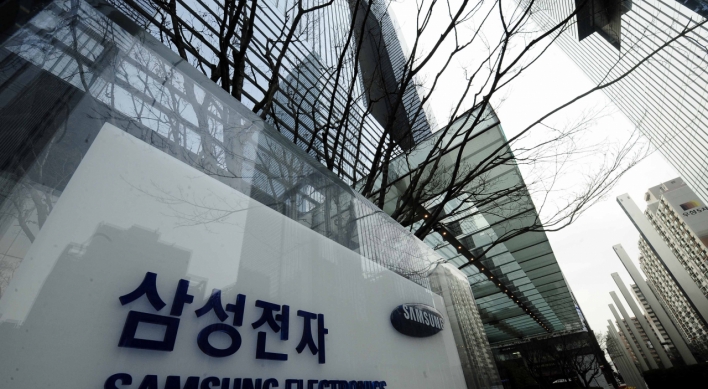To sum up a test-drive experience for Chevrolet’s Spark EV, I would start with “unusual.”
Because it was my first time driving a purely electric vehicle, there are limitations to my evaluation, such as being unable to compare it to its rivals, for instance.
But even with minimal references to rely on, I still had certain expectations, partly from my experience with hybrids.
And it was precisely as I had imagined ― nothing more, nothing less.
As I was driving the Spark EV, I thought of the prejudice of electric cars being just glorified golf carts. I guess you can call it that, only it’s bigger, faster, more luxurious, and comes with a better set of rims.
So unless I’ve been living by a different definition of glorification than everyone else, I can officially say I disagree.
Because it was my first time driving a purely electric vehicle, there are limitations to my evaluation, such as being unable to compare it to its rivals, for instance.
But even with minimal references to rely on, I still had certain expectations, partly from my experience with hybrids.
And it was precisely as I had imagined ― nothing more, nothing less.
As I was driving the Spark EV, I thought of the prejudice of electric cars being just glorified golf carts. I guess you can call it that, only it’s bigger, faster, more luxurious, and comes with a better set of rims.
So unless I’ve been living by a different definition of glorification than everyone else, I can officially say I disagree.

The Spark EV runs on an electrically powered magnet motor, meaning it essentially lacks the masculine sensation of stepping on the gas of a petrol or diesel car. But even so it’s just shameful to compare it to a golf cart ― the Spark EV is no joke and here’s why.
The electric motor churns out more than 105 kilowatts (143 horsepower) and has a maximum speed of 144 kilometers per hour and a maximum torque of 57.4 kilogram-meters, enabling 0 to 100 kph in under 8.5 seconds ― not too shabby for an all-electric car.
The biggest concern automobile consumers may have with EVs is the battery range: How far can you actually drive?
Chevrolet utilized all it could ― aero shutters, an electric regeneration system, eco tires and underbody aero panels ― for maximum performance. As a result, the Spark EV offers fuel economy, or rather energy efficiency, of 5.6 kilometers per kilowatt-hour and a driving range of 135 kilometers.
So then, let’s talk about the battery.
The Spark EV equipped with a 21.4 kilowatt-hour lithium-ion battery engineered to enable both alternate current and direct current.
With the fast-charging DC mechanism, it takes only 20 minutes to charge up to 80 percent capacity, while AC recharging requires six to eight hours using a 220V outlet, putting the car at the top in its class.
In addition, it’s nice to know that the battery comes with an eight-year or 160,000-km warranty.
There are two things that impressed me during the test-drive at the company’s driving center in Incheon.
First, how smooth the steering was for a Chevy. I haven’t had the same feeling since the first time I drove an Audi. And second, the level of tech they decided to use on the EV.
Apart from the electric parking break, rearview camera and full-auto air conditioning, I can most appreciate the digital cluster that includes a confidence gauge showing expected driving range based on driving habits and other conditions.
One option also recommends charging stations along the way if the route you plot is beyond the vehicle’s remaining range.
The close-to-none noise level of the motor also adds a bit of extra finesse to the car.
The Spark is objectively not one of the prettiest cars, but it meets my standard for cars in its segment nonetheless.
Also, it’s priced at 39.9 million won ($35,800), a bit pricey in my opinion ― but according to Sergio Rocha, president and CEO of GM Korea, it is strategically priced between its two main competitors, Renault Samsung’s SM3 Z.E. and Kia Motors’ Ray.
With tax incentives, the retail price is said to drop to 17 million won, which would make it quite affordable and more attractive for buyers.
To sum up, the Spark EV is not the best choice for those who enjoy driving long distances with a bit of boldness (I actually prefer listening to the sound of the engine during acceleration), not to mention the difficulty I had getting behind the wheel because of my size.
But it’s definitely a well-constructed vehicle considering the global environmental challenges we face.
And it’s loads of fun to drive.
Production is to start on Sept. 16 and deliveries will begin in early October, according to the company.
By Kim Joo-hyun (jhk@heraldcorp.com)
-
Articles by Korea Herald




![[KH Explains] No more 'Michael' at Kakao Games](http://res.heraldm.com/phpwas/restmb_idxmake.php?idx=644&simg=/content/image/2024/04/28/20240428050183_0.jpg&u=20240428180321)



![[Grace Kao] Hybe vs. Ador: Inspiration, imitation and plagiarism](http://res.heraldm.com/phpwas/restmb_idxmake.php?idx=644&simg=/content/image/2024/04/28/20240428050220_0.jpg&u=)


![[Herald Interview] Mom’s Touch seeks to replicate success in Japan](http://res.heraldm.com/phpwas/restmb_idxmake.php?idx=644&simg=/content/image/2024/04/29/20240429050568_0.jpg&u=)







